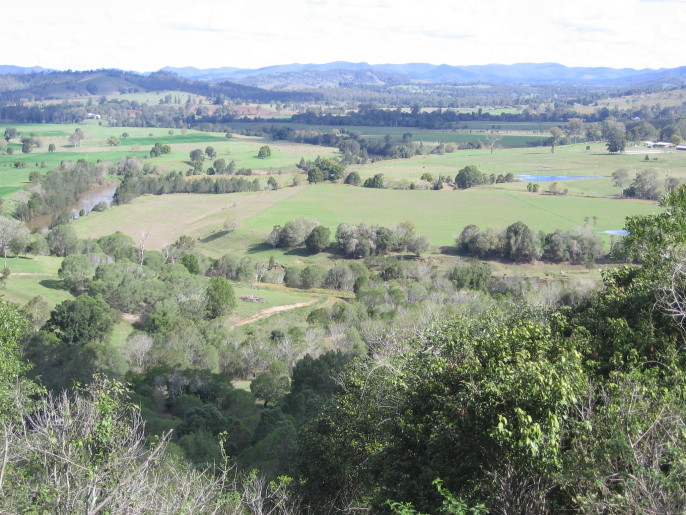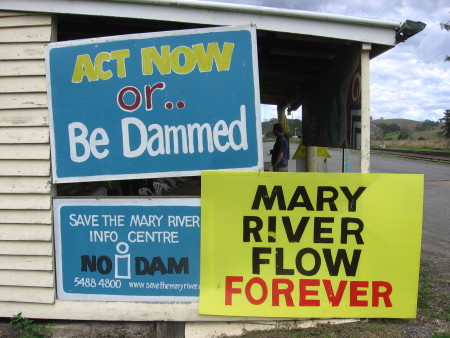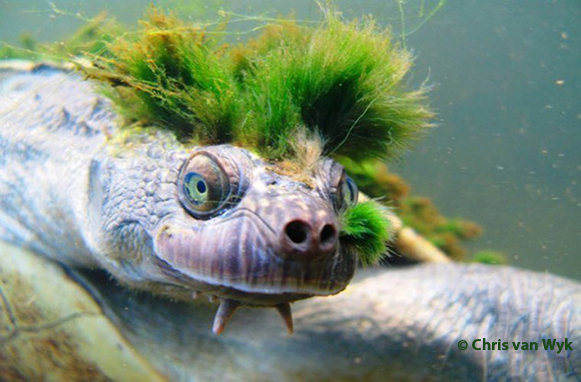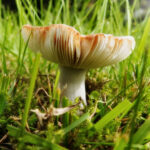Using the Power of Photography for Good
Photographer Chris van Wyk enjoyed viral success with his pictures of an algae-covered “punk” Mary River turtle. Major news outlets around the world published his photos. The media attention affected decisions related to preserving the turtle’s habitat. Steven Spence, reporting for Science Connected, asked Chris about the experience. The following essay is an edited version of his communication regarding the power of photography for environmental good.
The Power of Photography
Photography can change the world, the right photograph at the right time can change history, and, as we all have access to cameras these days, we all have the power to change the world. In this way, the power of photography to achieve environmental good is great.
The now iconic Mary River turtle is just one species endemic to the Mary River in Queensland. In 2009 the Queensland government made plans to dam the river at the Traveston Crossing, effectively dividing the natural range of the Mary River turtle and destroying much of its prime breeding habitat.


These plans upset me, not just because they’d destroy the habitat of many rare species, but also because they would have destroyed some of my favourite places to snorkel. When the conditions are right the river and its tributaries flow crystal clear, revealing a freshwater wonderland teeming with life.
I was still learning photography. I spent a day in the water, in a wetsuit, taking hundreds of terrible images while my hands lost feeling and turned blue from the cold. The smaller turtles swam away at any hint of danger. Their camouflage made them almost impossible to see. Luckily, larger, older turtles held their ground a little more brazenly, allowing me to capture the shots I needed.
What made these photos useful was that they were personable—people could relate to them. The scientific and ecological significance of a photo won’t help if the subject is “ugly.” What I wanted to do was show the turtle face to face and try to take a glamour shot of sorts. I was just extremely lucky that this guy had a full head of green algae “hair.” Not only did the turtle look cute and appealing, it was interesting.


Excited with my results, I shared them with the local newspapers. My goal was to have the turtle photos distributed as widely as possible. I also put the images up on Flickr and shared them in as many interest groups as I could. There are groups dedicated to everything, full of people who are specialists in every area. Conservation, reptiles, turtles; these groups are where people share their passions.
Some of the campaigners fighting the dam contacted me. They used the images to make postcards and posters to raise awareness. Arkin Mackay was my main contact. I also networked with the Australian Conservation Foundation, which used my images. One image started to go viral. I got requests to print from all over the world; Ripley’s Believe It or Not and even National Geographic Kids approached me.
The key was to give this image out to as many people as I could. I made it easy for them to publish and share it. The goal was publication, not remuneration.
The dam decision went all the way to the top. Queensland had approved it, pending authorisation of the federal environment minister, Peter Garrett. Peter overruled the state government. The decision was announced in the Courier Mail [a major daily newspaper in Queensland —Ed.]. A large image of my photo alongside a small insert of Peter Garrett appeared on page 3.
The image’s appeal seems to have outlasted the controversy that surrounded it. The Facebook page “I F***ing Love Science” has used the image three times now. The last time the photos were posted they got 100,000 “likes” in 24 hours—not a bad effort considering my goal was greater awareness of this unique species. Basically, I’ve learnt a lot about viral marketing in the process.
My conclusion is that interesting photographs are one of the most powerful tools we can use to change the world, and we are obliged to do so.
More Information
Chris van Wyk Photos (Smugmug)




